Unemployment Is All Over The Map
The unemployment rate in America hit 3.7% in September 2018, the lowest since 1969. The economy is strong.
Sure, it’s easy to cherry pick articles that claim it’s meaningless since so many people are “out of the labor force”, but even those articles acknowledge the economy is very strong. If you can’t find a job these days you might not be looking hard enough.
Here’s a graph of the unemployment rate since 1969:
If you’re a regular reader, you know I love maps and seeing things in geographic context. Putting data on a map usually reveals things you’d never see if viewed only in a spreadsheet. And putting things on a map and animating them through time reveals even more.
That said, I was delighted when I stumbled upon this very cool data animation of unemployment in America over time. I didn’t really stumble upon it, I have a gazillion map related RSS feeds that I consume on a regular basis. I know, dork…
Anyway, enjoy:
One very cool thing to see is how the North Dakota Oil Boom clearly shows up. A major oil field was discovered there in 2006, and things started ramping up by 2008. Jobs flowed in rapidly.
And then, well the screen turns black. Watch a small circle of white start in far Northwest North Dakota in 2007 as the unemployment rate starts to sink, only to get squashed by the recession in 2008.
But then in 2010 the white blob of low unemployment grows extremely fast as jobs come roaring back. For a while North Dakota had the lowest unemployment rate in the United States, mostly due to the oil boom. It lasted well into 2015 but has declined due to oil prices.
Another cool observation is how the grain belt holds up during the recession of 2008-2009. Here’s a screen shot of the darkest the map appears to get, in 2009.
Notice the vertical strip I circled in red of relatively low unemployment, even as the rest of the country was suffering. The North Dakota oil workers are in this circle, but most of it is likely agriculture jobs.
Those two areas in South Dakota that are still dark in the map above? Those are both Indian Reservations. Sadly many of these reservations are still very economically depressed.
Also notice in the 2009 map that California’s unemployment rate was over 10% almost everywhere, as well as Michigan.
So it’s very interesting when you have a large swath of the Midwest that still had a very low unemployment rate of generally under 4%, while two states that had a combined population of 47 million people were mostly over 10%.
Could this pattern hold up when we have the next big recession? I don’t have the answer to that, but the reason I dork out on things like this is to learn.
Heck, if I want to pursue geographic arbitrage one day it would be good to know if the grain belt always has low unemployment during bad recessions. I used to drive a forklift, I’m sure I can learn to drive a tractor.
Your Turn Readers – See if you can find any other patterns. I’d love to hear some insight about any of the visible patterns from the collective knowledge base out there.






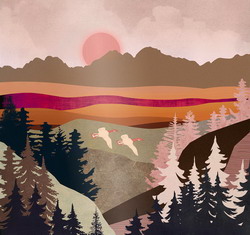



















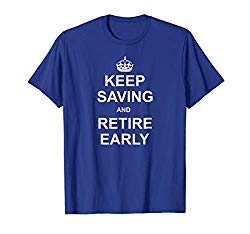


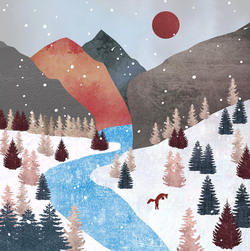

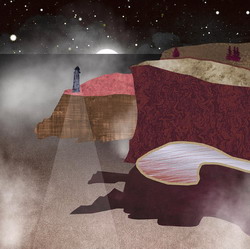

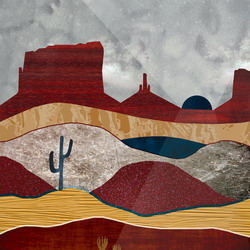











You know that I am a sucker for these map posts. I always think that they are so cool.
It was really depressing to see how dark the map got in 2009. So much so that I didn’t notice the strip of low unemployment you pointed out until reading your take.
The overall unemployment from the first graph seems pretty cyclical (up, down, up, down). Any particular reason for that?
TPP
I think that’s just the natural cycle of the economy, I guess. Things don’t stay great forever, nor do they stay bad. That’s my uneducated guess.
It really does make a difference when you put data into a visual map form. I do think the central part of the country will see a boon in the next couple of decades as people are getting priced out of the coastal areas and decide enough is enough and head centrally.
Agrigculture especially tends to weather recession very well as people have to eat and the government would take steps to ensure its survival with subsidees/tax breaks.
Very true that we always need food. But then you’d think that things related to the food industry would be immune too like grocery stores, trucks etc and they’re all over the country.
I wonder why that portion of north central Utah stays at 0% unemployment at all times. Oh. wait.
Seriously though, this is very cool. I’m going to watch it a couple dozen more times and see what I can find. Good stuff.
Thanks – let us know!
Man it really illustrates the issues in 2009. I really love the map posts. One does have to wonder what happens going forward with tech now so engrained in our society.
Good point, the next big downturn could reveal different patterns, it’s been over 10 years and much has changed.
Take a screen size view and you will see it better.
Being from the Houston area I know more specifics on the local economy. Like the rest of the country, 2008-2009 was tough. When you look at the video, notice the mini-oil and gas slowdown from 2015-2016 and the increasingly dark spot around Houston.
Thank goodness Houston is becoming more diversified economically. Healthcare and Finance help balancing out the oil & gas dependency.
Cool, I didn’t know about a slowdown in oil/gas in Houston at that time!
reservations are a tough thing. we have a couple of them in western, ny and they have casinos. about 4-5 people get all the money from that and the rest of the population gets the crumbs. we have a native friend in the southwest where they share the gravy train a little more fairly.
drive a tractor, dude, you’ll love it.
I’m torn on the casino thing. It’s good for them to have a way to make money, but if they don’t share it it just creates another have-have not situation. And it preys on poor people.
Cool map. Very effective way of seeing macro trends, and micro regional impacts. Shocking how dark the country got in 2008. Thanks for sharing.
Let’s hope it never gets that dark again, thanks for stopping by Fritz!
That animated map makes me think about the stock market over those times. You can see the black of 2008 coming in 2007, yet it hit like a moment in time for the financial system. Then you can see the recovery on the map in 2010, but the market forsaw it in spring of 2009. It’s too bad the animation ends in 2016. It’s the crystal ball we’ve all been looking for 🙂
Yeah I’d think the market and unemployment would move “mostly” in general lockstep, that’d be something to look at over history.
What affect does the growth of Amazon, Walmart, etc have on jobs now. I am sure you have a graph somewhere up your sleeve brewing that will trend the average wage with the increased employment. Are these more part time jobs, full time jobs and are they paying meaningful wages? Lots to dissect from the high level number of an employment percentage.
Well, despite what you hear in the mainstream media all the time I showed using the real government data how median incomes have outpaced inflation since 1984 in that post I did last year. So Amazon et al are all built into those numbers.
As for part-time vs full time, that’s an interesting one. I don’t actually know if the BLS records that but I suspect they do. That might be an idea to run some numbers and see if it’s post-worthy. Ahhh, more work!!
You know I looooove these map posts. I had no idea that swath of the Midwest did so well in the last recession. You have to wonder how this compares to actual salaries though – if they’re low, you’re still not in a super great position even if you have a job.
I didn’t know it either until I saw this. It’s really interesting and I searched to read more about it but didn’t find much. I’m sure the wages are lower but so is the COL, maybe not commensurate though.
I also found it fascinating that California had such a high unemployment rate.
Another thought is that this data is probably for traditional work and employment. So yeah, you can geoarbitrage to the low unemployment areas of the grain belt where you will always find work as a tractor driver. But when your work becomes unconventional and you start to make online income, does geoarbitraging to such areas even matter? 🙂
Good point. I found some new data about the way Americans are moving around that was published recently and will dive in to see if it’s worth a post. I don’t get paid enough to do this 😉
Thanks Dave
I love the video and I was astonished by the high unemployment rate of California…I would have say the opposite!
Let’s expect an increase in unemployment in next 2-3 years as part of economical cycle hoping in a soft landing and not in a 2008/2009 disaster…
I agree, it can’t stay this low, but it will be interesting to see the patterns of how it goes up this next time
Yup, unemployment is really low. The economy is certainly doing well isn’t it?
But I think the more interesting question to ask is “how long can it be sustained at these levels”? Historically, it seems like a year or two.
If we get another year or two out of it it’ll be awesome, for everyone